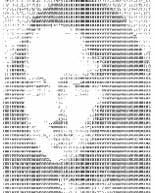After
three days of desperate trial-and-error I seem to have managed to get latexrender working for
wordpress under Mac
OS X.
First things first : if you only want to include some
symbols in your blog-posts the easiest way to do so is to use mimetex and the
corresponding
wordpress-plugin written by Steve Mayer. Follow the
instructions and you will be able to include a limited subset of LaTeX
in your blog within 10 minutes.
If you want more, you have to
work a lot harder. The starting point is to follow Steve’s
blog-entries on latexrender
.
But then under Mac OS X you will probably get error messages
when you activate the plugin. The reason seems to be that most versions
of imagemagick available for
OS X require X-terminal support and PHP gets confused between the two
shells. A typical error message is
Warning:
copy(70afbabac176169545d01f4bd91f3055.gif): failed to open
stream:
No such file or directory in
/Users/lieven/Sites/wordpress/latexrender/class.latexrender.php on
line
269
[Unparseable or potentially dangerous latex
formula. Error 6 ]
As suggested by Steve Mayer there are
two roads to obtain more information on what goes wrong. The first is to
uncomment the _unlink commands _ at the end of the
_class.latexrender.php_ file and look in the _wordpress/latexrender/tmp_
directory for which conversions were done and which failed. The normal
latexrender-procedure is : tex->dvi->ps->gif. Probably you will
get all files but the gifs!
Another (and more useful) source of
informations is to look in the _error-log_ of the Apache-WebServer and
see whether you get things like
This is dvips(k) 5.94a
Copyright 2003 Radical Eye Software (www.radicaleye.com)
\\’
TeX output 2004.08.30:1433\\’ ->
0d48700a5dde6d746813733d26dd8df8.ps
. [1]
sh: line 1:
gs: command not found
convert: no decode delegate for this image
format
/Users/lieven/Sites/weblog/latexrender/tmp/
0d48700a5dde6d746813733d26dd8df8.ps\\’.
convert: missing an image
filename/Users/lieven/Sites/weblog/latexrender/tmp/
0d48700a5dde6d746813733d26dd8df8.gif\\’.
identify: unable to
open image 0d48700a5dde6d746813733d26dd8df8.gif\\': No such file0d48700a5dde6d746813733d26dd8df8.gif\\’.
or directory.
identify: missing an image
filename
`
Here the essential point is that the webserver doesn’t
seem to be able to find GhostScript (even if you have several versions
installed).
To bypass these problems I did two essential
things : (1) in the _class.latexrender.php_ file I rewrote the
conversions so as to use _pdflatex_ instead of tex (to get
immediately a pdf-file rather than the tex->dvi->ps process) and then
use _convert_ to translate this pdf-file into a gif-file. (2) the
version of _convert_ and _include_ (both part of the
ImageMagick package) are those provided by Fink but you should be extremely
careful to install the imagemagick-nox package and not
the imagemagick package! After the command
sudo fink
install imagemagick-nox
you are presented with several
configuration choices. Do _not_ choose on auto-pilot the default
choices but look for options specifying that there is no X-support!
After this, everything should work. If you want to have a look at how
I changed the PHP files, mail
me.
 To
To